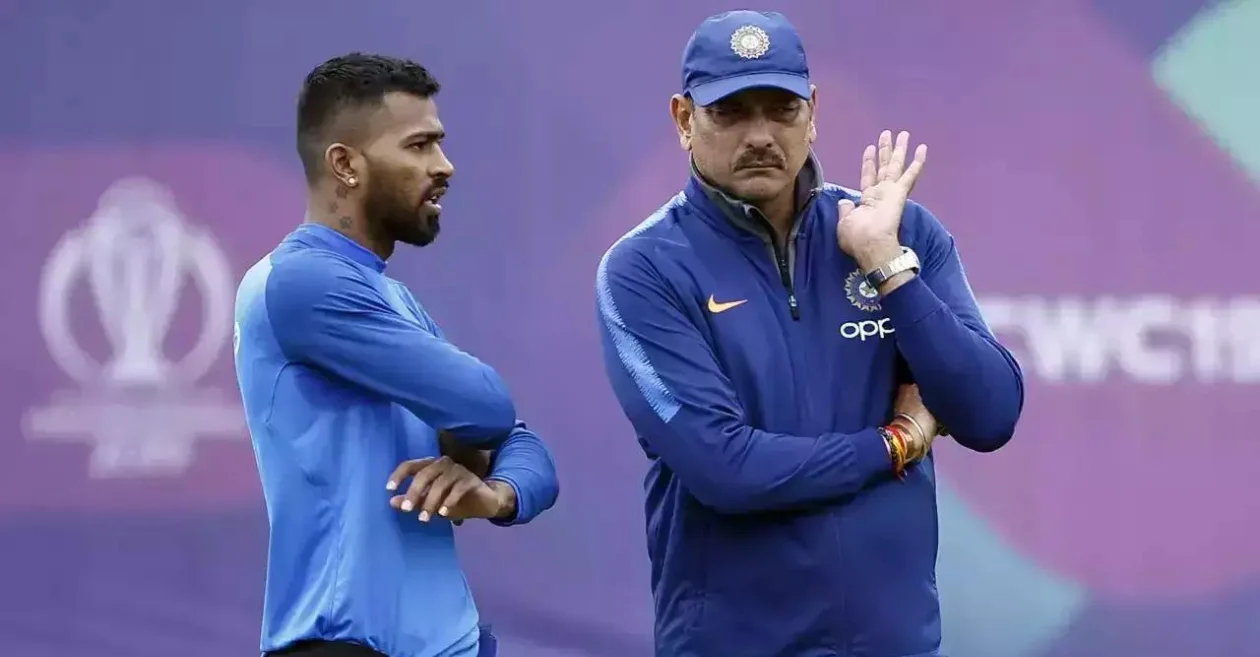Table of Contents
After being overlooked for the T20I captaincy, former Indian head coach Ravi Shastri outlined the future for star all-rounder Hardik Pandya. He advised Pandya to play as often as possible and draw inspiration from his recent ICC T20 World Cup success, where India ended an 11-year ICC trophy drought.
Pandya, who served as Rohit Sharma‘s deputy during India’s victorious ICC Men’s T20 World Cup campaign, was considered a top contender to succeed Rohit as captain once he retired from the format. When the squad for the current Sri Lanka tour was announced, Pandya was included solely as a player. Suryakumar Yadav was appointed as India’s T20I captain, and Shubman Gill was named vice-captain.
Ravi Shastri opined on Hardik Pandya’s fitness regime
Pandya’s ongoing fitness issues ultimately cost him the captaincy. Chief selector Ajit Agarkar explained at the pre-tour press conference that they favoured a player with consistently reliable availability, which swayed the decision away from him. In the latest edition of The ICC Review, Shastri offered Pandya valuable advice on returning to his peak performance.
“I think (it is) very important that he continues to play. I believe match fitness is very important. So whatever T20I cricket there is, he should play as much as he can. And if he feels strong and fit, then obviously he comes into the side for the one-day game as well. But then again, the bowling becomes important. If you have someone coming and bowling just three overs in where you have to bowl 10 in a one-day game, then the balance of the side takes a hit, If you can bowl consistently eight to 10 overs every game and then bat the way he does, I think he’ll play in one-day cricket as well,” Shastri said while speaking to host Sanjana Ganesan.
Also READ: Indian all-rounder Axar Patel names a captain he loves playing under
Shastri termed Hardik as the key valuable asset for India
Pandya injured his ankle more recently while fielding during India’s Cricket World Cup 2023 match against Bangladesh. This injury kept him out of action for a significant period, and he only made his return during the T20 World Cup. Pandya showcased his exceptional all-rounder skills upon his comeback, scoring vital runs and taking crucial wickets.
In the T20 World Cup, he amassed 144 runs in six innings at an average of 48.00 and a strike rate of 151.57, including a half-century with a best score of 50*. He also claimed 11 wickets in eight matches at an average of 17.36 and an economy rate of 7.64, with best figures of 3/20. In the final, Pandya delivered under pressure, taking Heinrich Klaasen‘s and David Miller‘s critical wickets in the last over, playing a key role in ending India’s 11-year trophy drought.
“So I think it is up to him. He understands his body better than anyone. His performance in the World Cup, especially at crucial moments, should inspire him. He shouldn’t need any extra motivation to get his fitness back to its peak,” Shastri concluded.
